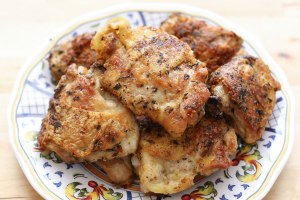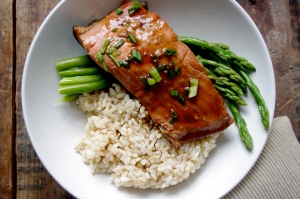 Eating healthy doesn’t allows mean breaking the bank. It’s true that health food restaurants and grocery stores are pricier; nevertheless, there are still ways to get around spending lots of money while maintaining a healthy diet.
Eating healthy doesn’t allows mean breaking the bank. It’s true that health food restaurants and grocery stores are pricier; nevertheless, there are still ways to get around spending lots of money while maintaining a healthy diet.
Below is a list of simple ways to eat healthy on a budget:
-
Buy in Season fruits and vegetables. Fruits and vegetables sold out of season are more expensive than those sold in season. Learn which foods match with the season to save a few bucks, (Seasonal produce guide: http://whole9life.com/wp-content/uploads/2010/12/whole9-produce-guide.pdf) Buying in season also means fresher, more delicious and nutrient-dense produce.
-
 Buy Discounted Meat. Keep a watchful eye as grocery stores often discount meats by up to 70% as they approach expiration date. Also try looking for less expensive cuts of meat, for instance chicken thighs instead of chicken breasts.
Buy Discounted Meat. Keep a watchful eye as grocery stores often discount meats by up to 70% as they approach expiration date. Also try looking for less expensive cuts of meat, for instance chicken thighs instead of chicken breasts. -
Buy from Local Framers Markets. Neighborhood farmers markets supply cheaper and at often times locally grown produce.
-
Buy frozen and stock up. Frozen produce can be cheaper, yet still as beneficial as fresh produce. It is generally picked at its peak of ripeness and frozen immediately after a process called blanching, where the product is cooked briefly in boiling water to sterilize. Frozen produce is also a great convenience for soups, shakes, stews and side dishes.
-
Organic Coupons. Save on organic and natural items by clipping coupons. (Free organic coupons: http://www.organicdeals.com/) Stock up on favorite items when they go on sale.
-
Organic Must Haves – Realistically, buying everything organic can become costly. Pick and choose what you buy organic by becoming familiar with the Dirty Dozen, foods you should always buy organic due to high levels of pesticides, and the Clean 15, the least contaminated foods with few or no contaminants. Here is a list of the Dirty Dozen and Clean 15:
Dirty Dozen
- Apples
- Strawberries
- Grapes
- Celery
- Peaches
- Spinach
- Sweet bell peppers
- Nectarines – imported
- Cucumbers
- Cherry tomatoes
- Snap peas – imported
- Potatoes
Clean 15
- Avocados
- Sweet corn
- Pineapples
- Cabbage
- Sweet peas – frozen
- Onions
- Asparagus
- Mangoes
- Papayas
- Kiwis
- Eggplant
- Grapefruit
- Cantaloupe
- Cauliflower
- Sweet potatoes
-
Avoid Impulse Buying. Budget by making a grocery list prior to grocery shopping. Buy organic items that are lower in price (such as produce), and make your own dishes from scratch.
-
 Home Cooked Meals. Cut expenses by thinking ahead. If you know you’ll be stuck late at work tomorrow, prep dinner ingredients for a home cooked meal, you’ll be far less tempted to spend on fast food and eating out.
Home Cooked Meals. Cut expenses by thinking ahead. If you know you’ll be stuck late at work tomorrow, prep dinner ingredients for a home cooked meal, you’ll be far less tempted to spend on fast food and eating out. -
Grow a Vegetable Garden. Grow your own vegetable garden and save on foods such as tomatoes, cucumbers, peppers, herbs, etc. (A vegetable garden how to guide) http://www.fruitsandveggiesmorematters.org/starting-your-vegetable-garden
~Valene Warren~
